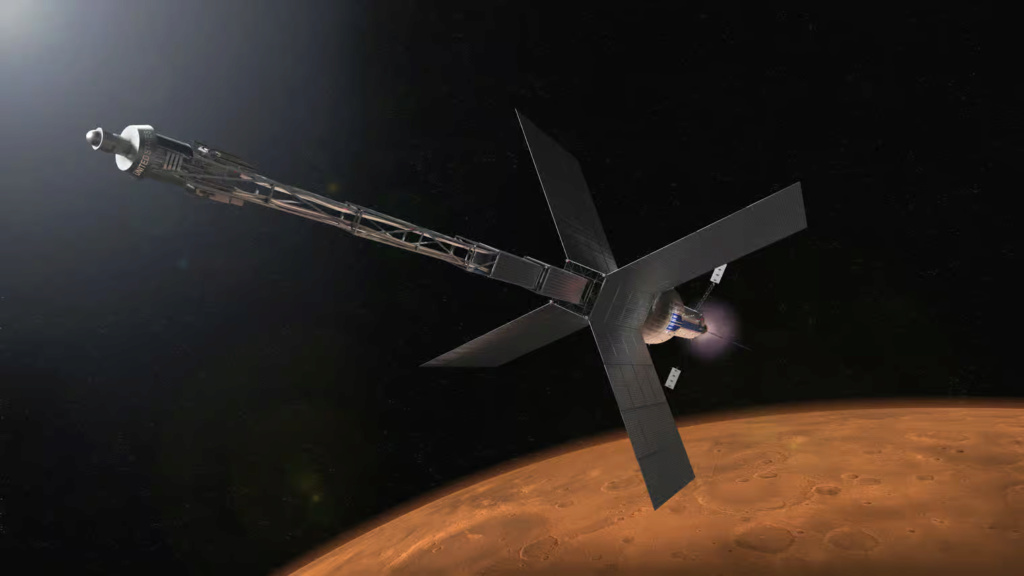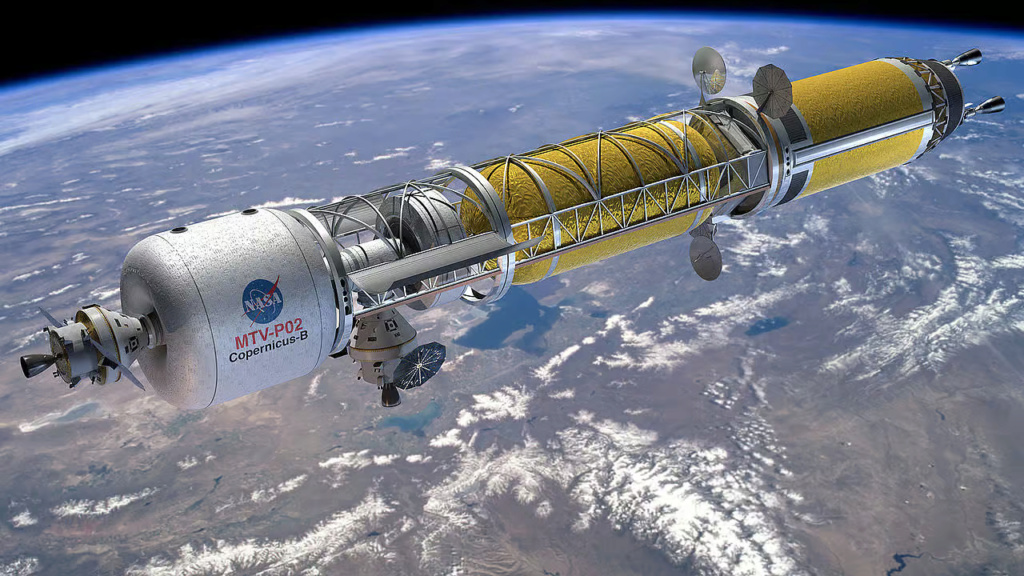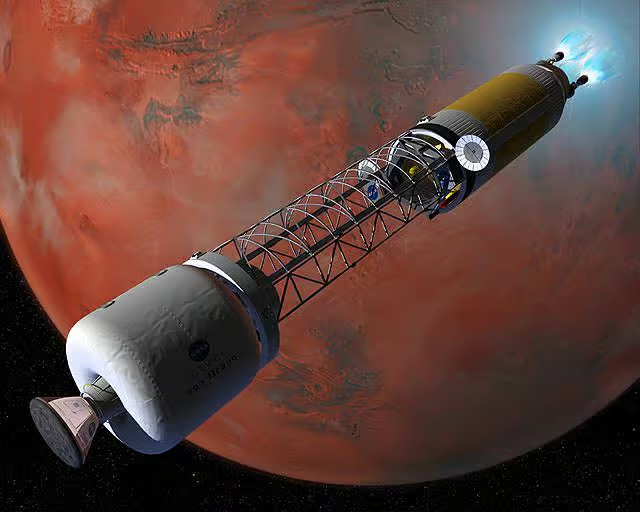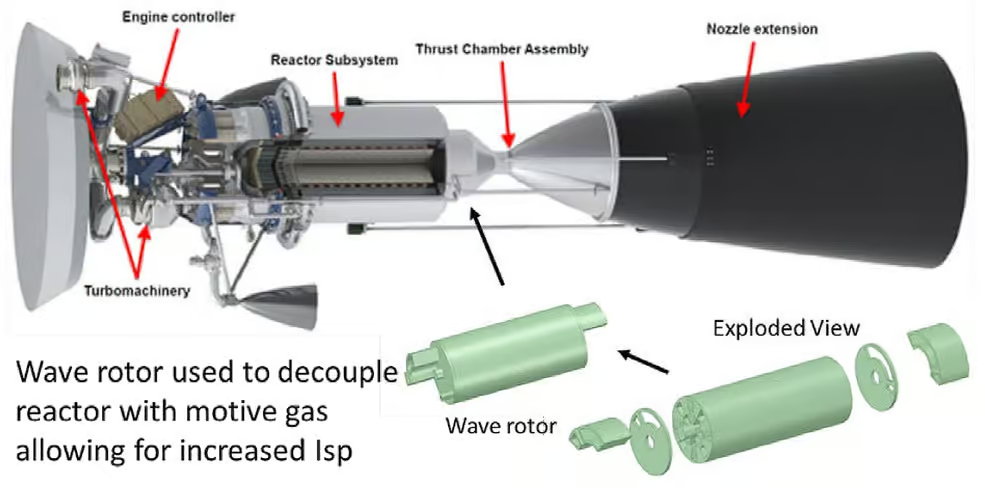!NASA is preparing a nuclear-powered rocket to go to Mars in just 45 days

A new era of space exploration is dawning. With the resumption of NASA's Artemis lunar program, our eyes are also on Mars, with a manned mission in the near future, on the horizon of the 2030s. If SpaceX offers its Starship, NASA is studying a way to reduce space travel time thanks to nuclear propulsion.
One of the biggest challenges in making amartian missionis the travel time. With current fuel propulsion technologiesliquid, it is possible to achieve this in at least six months. For a manned mission, this remains an essential problem for the physical and mentalastronauts(particularly exposure to radiation), and this immediately closes thedoorto a more distant inhabited exploration in theSolar system.
Given that we will not have the USS Enterprise or the Millennium Falcon in the near future , we must nevertheless find a way to drastically reduce the travel time of astronauts to the Red Planet, without weighing down the spacecraft. carrying tens of tons ofergolliquids. Nuclear propulsion is a very advantageous solution.

The revival of the race for the nuclear engine
A first race for this technology took place during the Cold War, then the programs were stopped. However, in recent years, Russia , China and the United States have again become involved in these projects. ThereNaarelaunched a bimodal nuclear propulsion program,binderboth a nuclear thermal propulsion system (NTP) and a nuclear electric propulsion system (NEP).
The goal is to reach Mars in 100 days, instead of 180 today. The Niac program program - Nasa Innovative Advanced Concepts - is in its first phase , namely collecting concepts and supporting their maturation, before moving on to more concrete stages.
Artist's impression of a spacecraft using both thermal and electric nuclear propulsion.

artist's impression of a spacecraft using both thermal and electric nuclear propulsion.
Rally nuclear thermal and nuclear electric
These are the two nuclear propulsion concepts that have been studied so far. The NTP is based on a conventional propellant with liquid hydrogen (LH 2 ) as propellant, which would be heated by an on-board nuclear reactor. This powerful heating causes the hydrogen to pass into a gaseous state, which drastically increases thepressurewhich is channeled with anozzle. The thrust generated is very effective. The concept has been studied by NASA and the USAirForce from the 1950s, and by the USSR between 1965 and 1980.
NEP propulsion is based on a nuclear reactor supplying electricity to an ion engine (propeller withhall effect). This generates aelectromagnetic fieldwhich accelerates particles ofgasto create thrust. The gas generally used isXenon.
?Did you know
Nuclear power has already been used in space for decades! Atomic batteries power several probes like Voyager 1 or Cassini because their distance from the Sun did not allow them to have enough solar energy. This is also the case for the Mars rovers Curiosity and !Perseverance, which operate without a solar panel
Combining these two propulsions for a single mission makes it possible to be more flexible in the thrust required. Indeed, an interplanetary journey requires both large thrusts (departure and arrival for braking) but also for small trajectory corrections. Moreover, for the comfort of the astronauts, the thrust must not be too powerful. On the other hand, it must be able to last longer. For example, a CIP concept can maintain thrust for nearly three hours.

Concept de moteur nucléaire bimodal imaginé par Ryan Goose, avec un compresseur pour améliorer la poussée. Le concept a été retenu en phase 1 du programme Niac.
L’innovation qui permet de réduire le temps de voyage à 45 jours
Retenu dans la phase I du programme Niac de la Nasa, le concept « Bimodal NTP/NEP with a Wave Rotor Topping Cycle » proposé par le professeur Ryan Goose, responsable du programme Hypersonics à l'Université de Floride, suggère l'ajout d'un compresseur à ondes de pression. Associé à moteur NTP, le compresseur utilise la pression générée par le chauffage du LH2 pour le comprimer encore plus, et ainsi augmenter davantage la poussée. Avec un moteur NEP, la poussée est aussi améliorée. Selon Goose, ajouter ce compresseur à un système bimodal alliant NTP et NEP permet de réduire le temps de voyage vers Mars à 45 jours.
bimodal nuclear engine concept imagined by ryan goose, with a compressor to improve thrust. the concept was retained in phase 1 of the niac program.
The innovation that reduces travel time to 45 days
Selected in phase I of NASA's Niac program, the " Bimodal NTP/NEP with a Wave Rotor Topping Cycle " concept proposed by Professor Ryan Goose, head of the Hypersonics program at the University of Florida, suggests the addition of a pressure wave compressor. Associated with NTP motor, the compressor uses the pressure generated by the heating of theLH2to compress it even more, and thus further increase the thrust. With a CIP engine, the thrust is also improved. According to Goose, adding this compressor to a bimodal system combining NTP and CIP can reduce travel time to Mars to 45 days.
Source : websites

